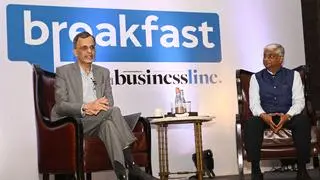The latest government data is an indicator of why the power situation improved this summer. The power deficit had come down to 2.2 per cent between April-July 2015 and electricity generation rose 3.5 per cent in July.
But developers fear that with 82,241 MW of thermal power generation capacity under various stages of construction as of July 2015, it could soon lead to a situation of oversupply.
In April-July alone, according to data from the Central Electricity Authority, electricity requirement grew 0.1 per cent to 369,253 million units, and availability rose almost 2 per cent to 361,299 million units.
With the financially stressed state distribution utilities opting for long power cuts in the hunt for power purchase agreements at cheaper tariffs, the growth in supply in the country is outstripping requirement.
The average power tariffs on the spot markets like Indian Energy Exchange during the period has been down by over ₹1 a unit as compared to the same months last year, while the volume of electricity traded on the exchanges has gone up by at least 400-500 million units every month apart from June.
In such a situation, generators are also not producing to their full capacity. Plant load factors of thermal power plants are down to 60.96 per cent so far in the current fiscal from 66.42 per cent in the previous year.
Experts differ on their views on the pace at which the country needs to add generation capacity.
A former NTPC Chairman and Managing Director recently said: “Provided you are not looking for windfall profits then investment in power generation is still viable. NTPC has been generating return on investment of 18-19 per cent quite comfortably. Higher than that may not be possible.”
“In a country like ours where the per capita consumption of electricity is still very low, it’s a question of whether to have the capacity in place for future demand or not. Five-six years down the line when the demand will eventually increase. At that point of time do you want to have the plants in place or do you want to start building the plants then?” he added.
However, private sector counterparts say with the low plant load factors of the existing installed capacity, the country can go slow on capacity addition. “The focus should be on fully utilising the existing capacity which can easily meet the demand for the next few years,” said a private sector power industry representative.








Comments
Comments have to be in English, and in full sentences. They cannot be abusive or personal. Please abide by our community guidelines for posting your comments.
We have migrated to a new commenting platform. If you are already a registered user of TheHindu Businessline and logged in, you may continue to engage with our articles. If you do not have an account please register and login to post comments. Users can access their older comments by logging into their accounts on Vuukle.